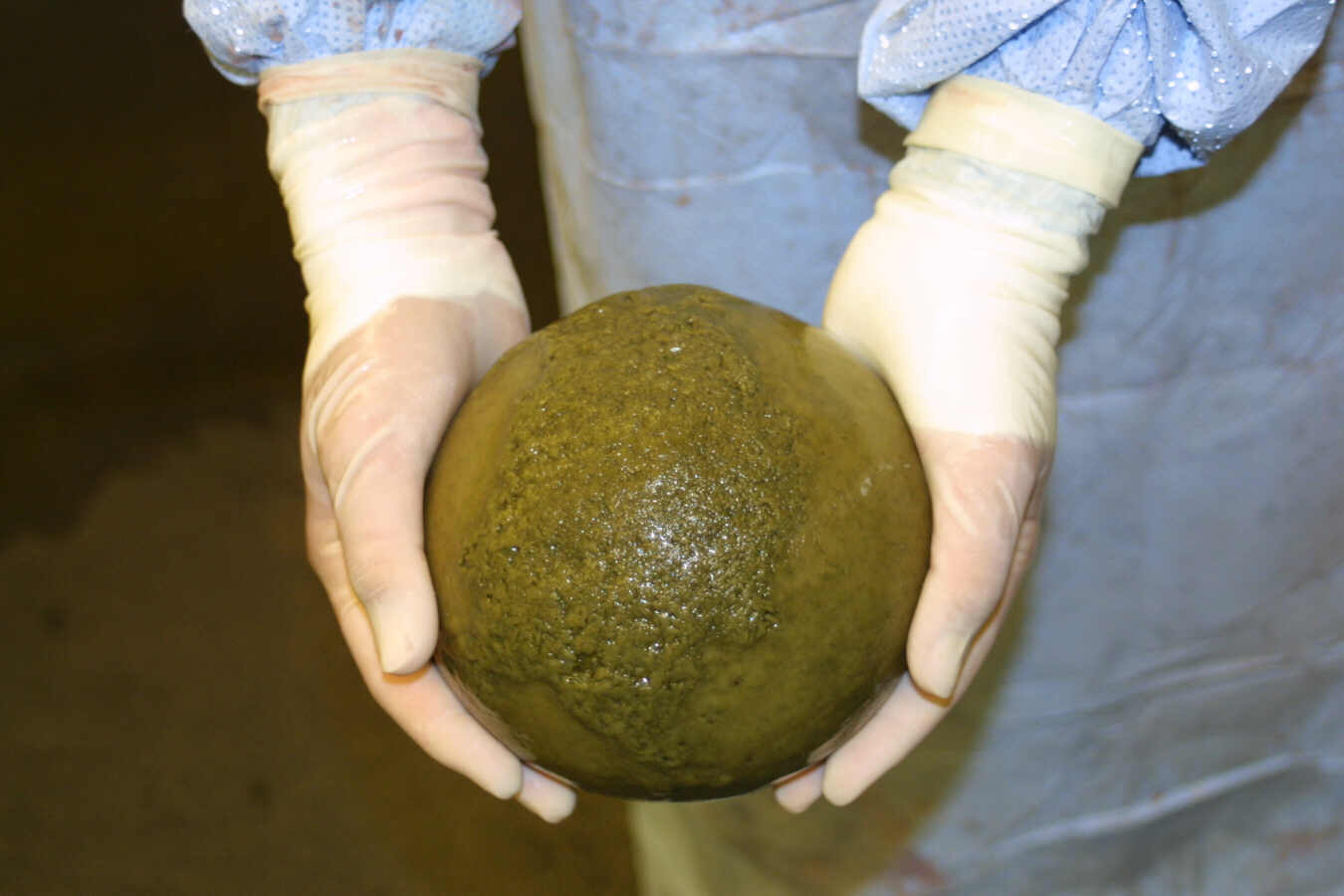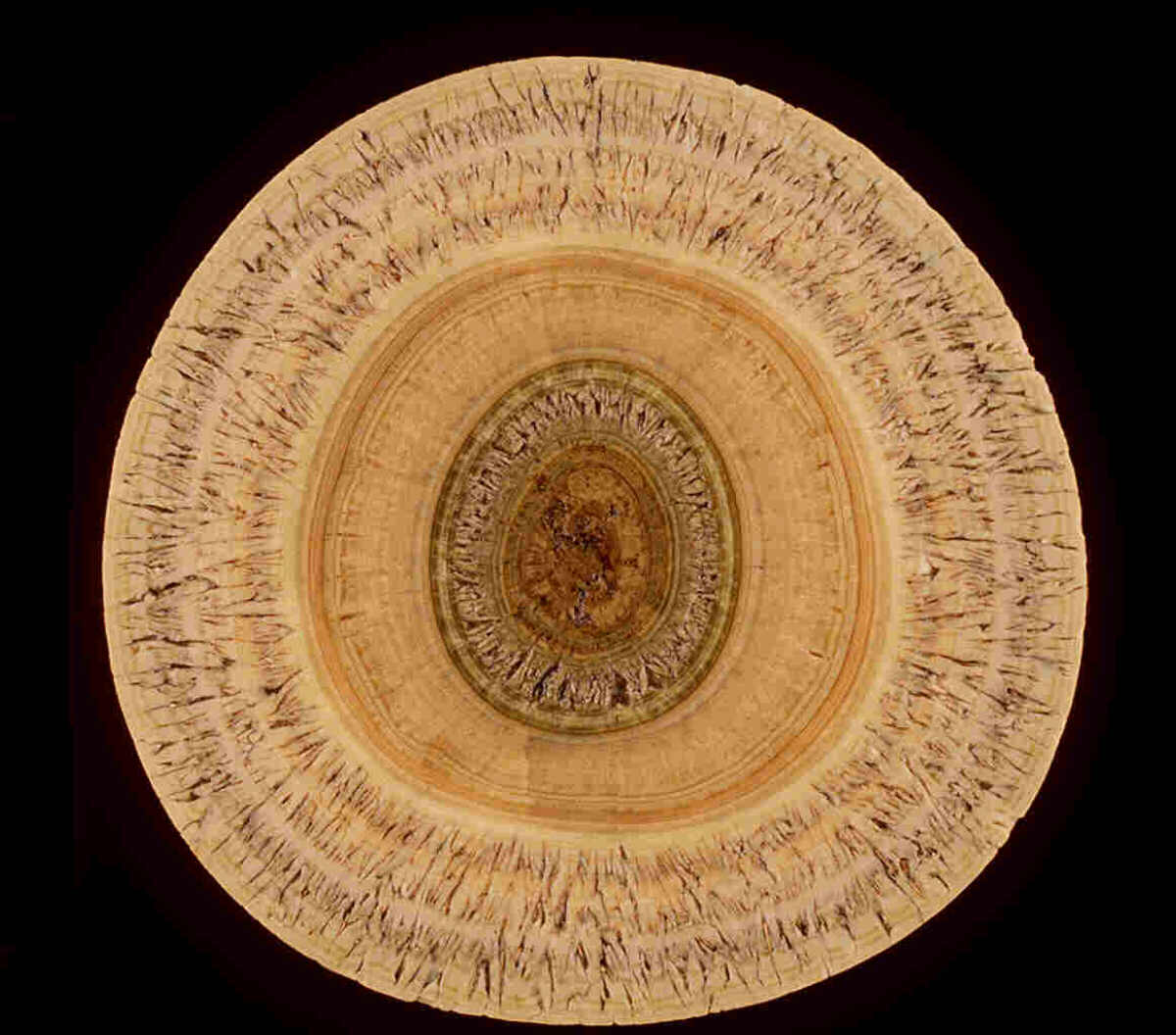When trainer Clint Haverty noticed a 3-year-old appaloosa stallion he was training showing signs of colic, he kept an eye on him, walked him, and took all the usual steps his vet recommended. But the horse seemed to get worse.
[MORE COLIC CAUSES: Grass Clippings]

Trust Your Instincts
“He just didn’t look right,” Clint says. So he followed his instincts, loaded him in the trailer, and hauled him to the clinic. “It was a good thing we did, or we might have lost him,” he says. During colic surgery, his veterinarian removed two intestinal stones. One the size of a cantaloupe, and the other the size of a softball. By examining the stones, called enteroliths, the veterinarian uncovered the young stallion’s taste for tail hair.
Once ingested, that tail hair began to collect mineral deposits and form a sphere. Much like a pearl in an oyster. When it didn’t pass through the intestinal tract, it caused a blockage, and that’s when the horse’s discomfort signaled Clint’s attention. The stallion recovered well and is back in competition, but his bout with colic shows the havoc enteroliths can play on a horse’s health.
So how common are enteroliths? How do you know if your horse is at risk? To uncover the truth about these deadly stones, we posed a few questions to Dr. Diana Hassel, who studied equine colic and enterolithiasis (the formation of enteroliths) at the University of California, Davis, before joining the faculty at Colorado State University this fall.
Here’s what she had to say.
What are enteroliths, and how do they form?
An enterolith is actually a stone made mostly of struvite mineral—a composite of magnesium, ammonium, and phosphate. They come in all shapes and sizes, but most are spherical or tetrahedral (having four sides).
Every enterolith has some form of a nidus (or center) from which the mineral is laid down in concentric rings.
Culprits that often act as “nidi” are pebbles or even a grain of sand, but they may also consist of feed material, metallic foreign bodies (like a small piece of baling wire), baling twine, hair (as with Clint’s horse), or other foreign materials that are ingested by the horse and for some reason aren’t passed through the digestive tract.
Simple hairballs are called trichobezoars, but they’re an uncommon cause of colic in horses. It’s rare they’ll cause a severe enough obstruction that requires surgery—however, if a substantial amount of mineral is laid down over the trichobezoar, it may become an enterolith with a hairball center.
Sometimes we’ll see ingested rope or twine that develops hundreds of little enteroliths all over its surface.
[READ ABOUT: Do’s & Don’ts of Colic]

Are enteroliths common?
Enteroliths are the most common form of surgical colic at the University of California, Davis. And the number of cases seems to have increased. Between 1973 and 1986, only about 6.6 percent of the horses referred to the clinic for colic had enteroliths. Between 1987 and 1996 that number increased to 21.6 percent.
We see horses with enteroliths on nearly a weekly basis. The most typical case will be an obstruction from a solitary, baseball-sized stone that becomes lodged in the descending colon. The stones form in the ascending (large) colon. And when they move downstream to the bowel (with a smaller diameter), they become lodged and may cause a complete obstruction.
What are some of the warning signs?
About 15 percent of horses with enteroliths will have a history of passing a small enterolith in their manure. It’ll look like a cement fecal ball. If you find enteroliths in your pasture, I’d recommend having your horse evaluated at a clinic that can perform abdominal x-rays. Right now, this is the best method we have for detecting enteroliths, though x-rays may not always detect them (particularly in larger horses).
Some horses (about 33 percent) have a history of chronic recurrent colic that responds to medical treatment. That can be another warning sign that an enterolith is present.
Other signs that occur less frequently include changes in attitude (grumpiness, for example), changes in performance (downhill walking or jumping may be affected), chronic diarrhea, or weight loss (although the majority of horses with enteroliths are overweight).
[READ: How Not to Panic if Your Horse Colics]

What do you do if a horse colics with an enterolith?
Right now, surgery is the only treatment for removing enteroliths. If an enterolith causes the intestines to rupture, there’s no effective treatment, and the horse won’t survive.
If the condition is caught before the intestine ruptures, success of surgical treatment is very high (more than 90 percent survive long-term) compared with all other forms of surgical colic.
Are some horses more prone to forming enteroliths?
Most likely, a horse will develop enteroliths due to a combination of three factors: diet, environment, and genetics.
It’s a highly regional disease with worldwide distribution. Occasional cases have been seen in Australia, Tahiti, and parts of Europe. Within the U.S., Florida, Ohio, and Texas are states where enteroliths frequently occur, but California sees the largest number of cases.
One reason for that is because some regions—like California—produce very rich alfalfa hay, high in magnesium, protein, and many of the ingredients needed to form a stone. Rich alfalfa also contributes to a more alkaline (higher pH) environment in the colon, and horses prone to develop enteroliths have a higher pH in their colon, even when they’re on the same diet as horses that aren’t prone to enteroliths.
Some breeds do seem to be at greater risk. Arabians, Morgans, and American Miniatures have been shown to be overrepresented breeds with enteroliths. It’s not uncommon for affected horses’ siblings to also develop enteroliths.
Are younger horses at greater risk?
The average age when we see horses with enterolith obstructions is around 11 to 12 years. But they may be as young as a yearling or as old as 25 (or more). The youngest reported case was in an 11-month-old Miniature Horse.
If your horse develops enteroliths at a young age he should be put on a more aggressive preventive program to avoid development of enteroliths again in the future.
What does a preventive program consist of?
The best prevention in horses with proven susceptibility to the disease is to eliminate alfalfa products from their diet. And, if possible, get the horses out on pasture daily.
Change to grass or oat hay, and supplement with grain and possibly apple cider vinegar. Although vinegar has not been proven to help prevent enteroliths, it does reduce colon pH a small amount, which may help. Some horses initially object to the vinegar’s taste, but most grow to like it. A typical dose would be one cup over grain, twice daily.
Be very watchful with feed changes in horses suspected of having an enterolith. If horses undergo changes in feed (to a more fibrous type, such as oat or grass hay) it can cause the stone to move within the intestinal tract, leading to obstruction and colic. Should you really suspect your horse has enteroliths, it’s best to get abdominal x-rays.
If you don’t have a high-risk horse, but you’re worried about the disease, you can feed a 50/50 mixture of alfalfa/ grass, and that may be enough. Alfalfa is generally a good quality feed, and may be beneficial for ulcer prevention. Therefore, I don’t advocate removing alfalfa from all horses’ diets.






